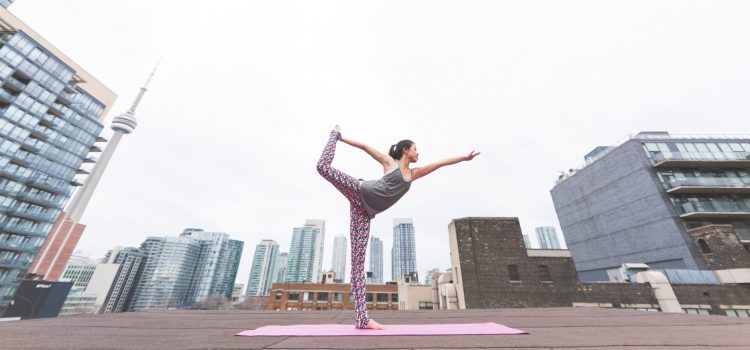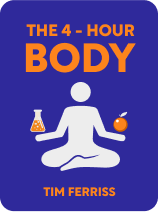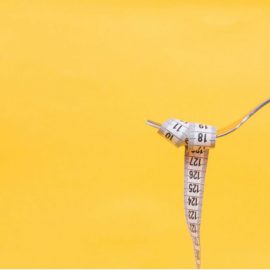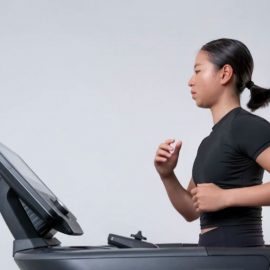

This article is an excerpt from the Shortform book guide to "The 4-Hour Body" by Timothy Ferriss. Shortform has the world's best summaries and analyses of books you should be reading.
Like this article? Sign up for a free trial here .
What is prehab? How can it help you avoid rehab and dealing with injuries down the line?
Prehab is the opposite of rehab. You don’t recover after an injury but instead work to avoid injuries.
Read more about prehab and how to incorporate it into your routine.
Prehab
Prehab is the opposite of rehab—instead of doing recovery exercises after you’ve been injured, you do exercises in advance of working out to stabilize your body so you don’t become injured in the first place. Most injuries are caused by imbalances—differences in strength and stability between the left and right sides of the body, or between opposing muscles.
- (Shortform example: Your bicep and triceps are opposing muscles—to bend your elbow, you must contract your bicep and relax your tricep. If your bicep is much stronger and tighter than your tricep, your range of motion decreases and you can’t straighten your arm fully without hurting your bicep.)
The author spoke with Gray Cook, an injury-prevention specialist who works with high-level athletes as well as special forces agents, for tips on how to correct imbalances. Cook invented the Functional Movement Screen (FMS), which is an assessment that identifies imbalances and prescribes corrections. FMS is a very effective way to prevent injury—for example, before adopting FMS in 2008, seven members of the Atlanta Falcons football teams were injured so badly they couldn’t finish the season. After adopting FMS, only one person suffered a minor injury.
Correcting Imbalances
You have an imbalance when one side of your body can lift more than 10% more weight than the other side, or perform 10% more reps. The full FMS program contains many exercises for correcting imbalances, but the MED is to practice only three. First, we’ll learn the exercises and how to test for imbalances. Then, we’ll look at scheduling.
Exercise #1: Chop and Lift
The chop and lift consists of two exercises. First, we’ll explain how to do the movements. Then, we’ll explain how to test for imbalances.
Performing the Exercises
The chop and lift helps correct imbalances between the left and right sides of the body and between the upper and lower body. Additionally, the exercise helps increase core stability. To perform the chop:
- Find a machine with a high cable and attach a bar or tricep extension (rope) to the cable. Choose a weight that you think you can lift for a maximum of 12 reps.
- Place a yoga mat with the skinny end against the machine.
- Kneel on the yoga mat with one knee up, like you’re proposing. Your bottom knee should be about two-thirds of the way from the machine. Mark this spot with a permanent marker or tape so you can assume the same position every workout. Arrange both feet in line with the bottom knee.
- Take hold of the bar or rope. Put the hand that’s farthest from the machine three hand-spans away from the end of the bar or rope. The other hand should be placed right next to the cable.
- Take a large breath and engage the muscles in your torso and hips. Straighten your back, keep your head tall, and keep your hips neutral.
- Pull the bar or rope down to your chest and then push it towards your bottom knee. The bar or rope should travel in a straight line. As you do this, breathe out through your teeth to make a hissing sound. You should still have half your air left by the time you finish the movement. Your head and shoulders should rotate together, and you shouldn’t rotate more than 15-20 degrees off the starting position.
- Return the cable to its original position as you continue this breathing. Ideally, put the weight all the way onto the stack. If the cable isn’t long enough to put the weight down, you can attach a piece of chain or one of the nylon slings used in rock climbing to add length.
- Breathe normally for two breaths.
- Repeat.
The lift is the opposite of the chop—instead of pulling down, you’ll be pulling up. To perform the lift:
- Find a machine with a low cable (or adjust the original machine) and attach the bar or tricep extension. Choose a weight that’s 50-65% less of the weight you used for the chop.
- Follow steps 2-5 of the chop instructions.
- Pull the bar or rope up to your chest and then lift it to your top knee. As with the chop, the bar or rope should travel in a straight line. As you do this, breathe out through your teeth to make a hissing sound. You should still have half your air left by the time you finish the movement. Your head and shoulders should rotate together, and you shouldn’t rotate more than 15-20 degrees off the starting position.
- Follow the rest of the steps for the chop.
Testing for Imbalances
To test imbalances for prehab, chop down towards your left knee as many times as you can (ideally somewhere between 6-12 reps) before your movement gets jerky or your form starts to deteriorate—for example, you can no longer maintain your tall posture. Write down how many reps you managed. Then, do the same for the chop towards your right knee, and the lift on both sides. If you can perform 10% more reps on one side or the other, you have an imbalance.
Exercise #2: Turkish Get-Up (TGU)
The Turkish get-up (TGU) consists of nine movements. If you find the exercise difficult, you can stop at step 5, the arm post.
Performing the Exercise
The author doesn’t describe how to do the TGU. Instead, he directs readers to a video. If you’re a beginner, you should start with 4-6 kg of weight (women) or 8-12 kg (men).
Testing for Imbalances
To test for imbalances, attempt to perform 5 TGUs on each side. Compare how many you manage on each side.
Exercise #3: Deadlifts
The deadlift improves the stabilizing ability of the deep hip muscles. There are two types of deadlifts used for prehab: the two-arm (2SDL) and the one-arm (1SDL). For either, you first need to get a sense of your single-leg flexibility to set up your positioning correctly.
Testing Your Leg Flexibility
To test your leg flexibility:
- Put your feet together and straighten your legs. There should be no bend in your knees.
- Reach down towards your toes, keeping both feet flat on the ground.
- To test your legs individually, put one foot up on a block or step. The other leg is the one you’re testing, so keep it straight, with the knee locked. Most people will have one leg that’s more flexible than the other.
Performing the Exercises
Start by learning the two-arm deadlift:
- Find two dumbbells and put one on each side of you on the ground. They should be between 10-30 pounds each—if they’re too light, they’ll encourage improper shoulder and elbow movement.
- If you were unable to touch the floor in the leg flexibility test, put each weight up on a box to get it within your reach.
- Stand on one foot and bend your knee 20 degrees. The other foot should be straight out behind you with your toe pointing towards the ground.
- Sit your bum back and bend at the hips. Your upper body should always be in line with your back leg—imagine your body is a teeter-totter.
- Grab the weights with a firm grip (this will protect your shoulders). Don’t pull your shoulders back.
- Stand up to lift the weights, still maintaining the line between your upper body and back leg.
- Put the weights down with the same hinging motion you used to get down in step 3.
- Stand up and take a breath.
- Repeat on the other side.
The one-armed deadlift is similar but you’ll only have a weight in one hand. To perform:
- Put a weight between your legs. If you were unable to touch the floor in step 1 of the leg flexibility test, put the weight up on a box to get it within your reach.
- Follow steps 2-4 of the two-armed deadlift.
- Grab the weight with the arm on the same side as the straight leg. Use your other arm to balance. Since you’re only lifting one weight in this exercise, you’ll have to fight against rotational torque, which will develop your core.
- Repeat the rest of the steps for the two-armed deadlift.
Testing for Imbalances
To test for imbalances, perform 5 reps per leg of both the two-arm and one-arm versions. Compare how many you manage on each side.
Schedule to Optimize Prehab
On the Tuesday of the week you start FMS, teach yourself how to perform all movements and practice them for 30-45 minutes using no weight at first, and then a light weight as you get more comfortable. On Thursday and Saturday, spend 45-60 minutes testing yourself to find your imbalances. (Testing twice ensures that you’ve correctly identified your weak areas.) Test using the methods described above, and additionally perform 10 unweighted full-range (bum to heels) squats.
For the next two to six weeks, do the following on Mondays and Fridays: If you were capable of doing the full-range squats, do the chop and lift, TGU, and one-arm deadlifts. If you couldn’t manage the squats, do an additional set of chop and lifts but with both knees down. Do seven sets of 3-5 reps of each exercise on the following sides: strong, weak, strong, weak, weak, weak, weak. Rest 60 seconds in between sets. Use a 1/4 or 2/4 cadence.
After six weeks, your imbalances should be corrected. If you like, you can continue doing 30-45-minute sessions on Mondays and Fridays. In these workouts, do two sets of 3-5 reps on each side of the following: TGU, both knees down for the chop and lift, two-armed deadlift, regular chop and lift, one-armed deadlift.
The author retests himself every 4-6 weeks for any new imbalances that might have cropped up.

———End of Preview———
Like what you just read? Read the rest of the world's best book summary and analysis of Timothy Ferriss's "The 4-Hour Body" at Shortform .
Here's what you'll find in our full The 4-Hour Body summary :
- How to do the least amount you need to do for the results you want
- Why you need a cheat day in your diet
- How to improve everything about your body, including sleep, sex, and longevity






